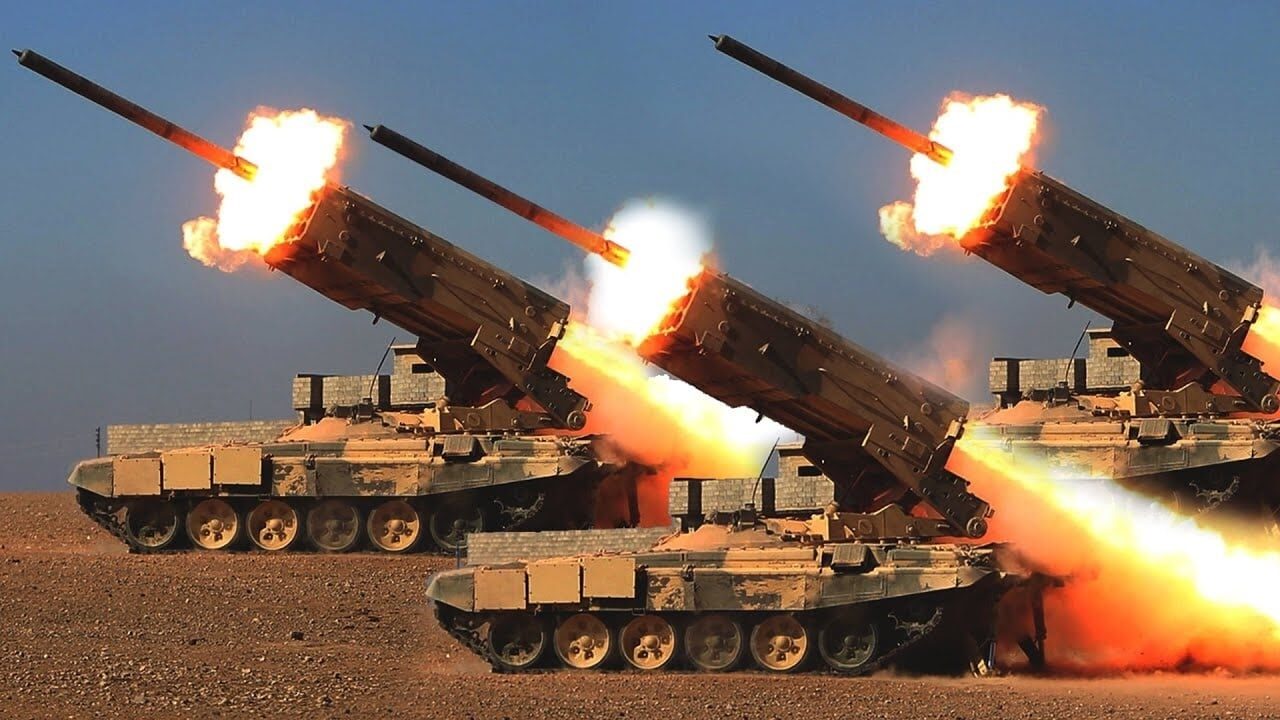The War in Ukraine Looks Like Hell for Putin: Even after nearly six months of war, the Russian military hasn’t managed to achieve its primary objectives in Ukraine—and despite updating those objectives mid-campaign to reflect the shortcomings of the Russian forces.
Donbas and Russian Air Base Attack
On day 168 of the Russian invasion of Ukraine, the Russian military conducted ground assaults in the Donbas but failed to achieve any breakthroughs.
But while all of this was going on in the Donbas, the Ukrainian military struck deep behind enemy lines at a major Russian Aerospace Forces base in Ukraine. On Wednesday, several major explosions took place on the Safy Air Base in Russian-occupied Crimea.
U.S. officials told the Washington Post that no major U.S. weapon system was involved in the attack, ruling out the possibility that this was an M142 High Mobility Artillery Rocket System (HIMARS) strike.
However, the Ukrainian forces are also using the M270 Multiple Launch Rocket System (MLRS), a heavier-armed cousin of the HIMARS, which has been provided by the United Kingdom and Norway; if the Ukrainians managed to develop a short-range ballistic missile in the likes of the U.S. MGM-140 Army Tactical Missile System (ATACMS), which has an effective range of up to 190 miles—the Pentagon hasn’t given the Ukrainians the ATACMS yet despite repeated calls for it—then it could be possible that the strike was conducted by long-range fires.
Some Ukrainian officials are claiming that the attack was conducted by “special forces,” but there is no verification yet.
The Ukrainian Air Force also claimed that about 10 (in the official daily Russian casualty list, the Ukrainian military claimed 9) Russian aircraft, possible Su-24s, Su-30s, Il-76s, and were destroyed in the attack. At least one person was killed and 14 people injured in the attack.
Russian Casualties in Ukraine
The Russian military continues to suffer heavy casualties in the war, suffering a concomitant adverse effect in effectiveness.
The Ukrainian Ministry of Defense claimed that as of Wednesday, Ukrainian forces have killed approximately 42,800 Russian troops (and wounded approximately thrice that number), destroyed 232 fighter, attack, and transport jets, 193 attack and transport helicopters, 1,832 tanks, 971 artillery pieces, 4,086 armored personnel carriers and infantry fighting vehicles, 261 Multiple Launch Rocket Systems (MLRS), 15 boats and cutters, 3,005 vehicles and fuel tanks, 133 anti-aircraft batteries, 766 tactical unmanned aerial systems, 89 special equipment platforms, such as bridging vehicles, and four mobile Iskander ballistic missile systems, and 185 cruise missiles shot down by the Ukrainian air defenses.
A New Russian Unit?
It is no secret that the Russian military is suffering from severe force generation issues.
Frontline Russian units lack the sufficient manpower to conduct in sort of large-scale, coordinated offensive operations. And thus, Russian commanders are being forced to send in ad-hoc units, usually of platoon of company size (between 40 to 120 men), instead of the larger combined-arms formations that the Russian military was using earlier in the war, most notably the Battalion Tactical Group.
“Russian commanders highly likely continue to be faced with the competing operational priorities of reinforcing the Donbas offensive, and strengthening defences against anticipated Ukrainian counter attacks in the south,” the British Military Intelligence assessed in its latest update on the war.
“To support the Ukraine operation, Russia has almost certainly established a major new ground forces formation, 3rd Army Corps (3 AC), based out of Mulino, in Nizhny Novgorod Oblast east of Moscow,” the British Ministry of Defense stated.
“Russia likely plans to resource a large proportion of 3 AC from newly formed ‘volunteer’ battalions, which are being raised across the country, and which group together recruits from the same areas,” the British Ministry of Defense added.
“Russian regional politicians have confirmed that potential 3 AC recruits are being offered lucrative cash bonuses once they deploy to Ukraine. Recruitment is open to men up to 50 years old and with only middle-school education,” the British Ministry of Defense stated.
“A Russian army corps typically consists of 15-20,000 troops, but it will probably be difficult for Russia to bring 3 AC up to this strength, given very limited levels of popular enthusiasm for volunteering for combat in Ukraine,” the British Military Intelligence assessed, adding that the Russian unit is unlikely to play a decisive role in the Russian campaign in Ukraine.
1945’s New Defense and National Security Columnist, Stavros Atlamazoglou is a seasoned defense journalist specializing in special operations, a Hellenic Army veteran (national service with the 575th Marine Battalion and Army HQ), and a Johns Hopkins University graduate. His work has been featured in Business Insider, Sandboxx, and SOFREP.

